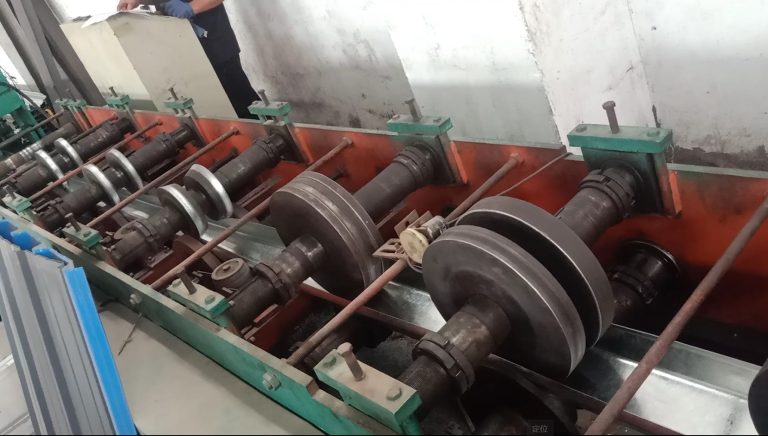Table of Contents
Potential Investment Opportunities in the Steel Industry
The steel industry has long been a cornerstone of the global economy, providing the raw materials necessary for construction, manufacturing, and infrastructure development. As such, it presents a myriad of investment opportunities for those looking to capitalize on its growth potential. However, like any industry, the steel sector also comes with its fair share of risks that investors must carefully consider before committing their capital.
One of the primary investment opportunities in the steel industry lies in its cyclical nature. Steel demand tends to fluctuate with economic cycles, with periods of economic growth typically leading to increased demand for steel products. This presents an opportunity for investors to capitalize on the industry’s growth during economic upswings, potentially reaping significant returns on their investments.
Another key investment opportunity in the steel industry is the ongoing shift towards sustainable and environmentally friendly practices. As concerns about climate change and environmental degradation continue to grow, steel companies are increasingly investing in technologies and processes that reduce their carbon footprint. This shift towards sustainability not only benefits the environment but also presents a unique investment opportunity for those looking to support companies that are leading the charge towards a greener future.

Furthermore, the steel industry is also ripe with opportunities for investors looking to diversify their portfolios. Steel companies operate in a wide range of sectors, from construction and infrastructure to automotive and manufacturing, providing investors with exposure to a diverse array of markets and industries. This diversification can help mitigate risk and protect investors from the potential downsides of investing in a single sector.
However, despite the numerous investment opportunities in the steel industry, it is important for investors to carefully assess the risks associated with investing in this sector. One of the primary risks facing the steel industry is its susceptibility to external factors such as changes in global trade policies, fluctuations in commodity prices, and geopolitical tensions. These external factors can have a significant impact on steel prices and demand, potentially leading to volatility in the market and affecting the profitability of steel companies.
Another key risk in the steel industry is the threat of overcapacity. The steel industry is highly competitive, with numerous players vying for market share. This intense competition can sometimes lead to overproduction and excess capacity, driving down prices and squeezing profit margins. Investors must carefully monitor market conditions and industry trends to assess the risk of overcapacity and its potential impact on their investments.
In conclusion, the steel industry offers a wealth of investment opportunities for those looking to capitalize on its growth potential and diversify their portfolios. From its cyclical nature to its shift towards sustainability and diversification across multiple sectors, the steel industry presents numerous avenues for investors to explore. However, it is crucial for investors to carefully assess the risks associated with investing in this sector, including external factors, overcapacity, and market volatility. By conducting thorough due diligence and staying informed about industry trends, investors can make informed decisions and potentially reap significant rewards from their investments in the steel industry.
Importance of Risk Assessment in Steel Industry Investments
Investing in the steel industry can be a lucrative opportunity for many investors. With the global demand for steel continuing to rise, there are plenty of opportunities for growth and profit in this sector. However, like any investment, there are risks involved that must be carefully assessed before making any decisions.
One of the most important aspects of investing in the steel industry is conducting a thorough risk assessment. This involves evaluating the potential risks and uncertainties that could impact the performance of your investment. By identifying and understanding these risks, investors can make more informed decisions and mitigate potential losses.
There are several key risks that investors in the steel industry should be aware of. One of the most significant risks is the volatility of steel prices. Steel prices can fluctuate significantly due to a variety of factors, including changes in demand, supply chain disruptions, and global economic conditions. These price fluctuations can have a direct impact on the profitability of steel companies and, by extension, on the value of your investment.
Another important risk to consider is the competitive landscape of the steel industry. The steel industry is highly competitive, with many companies vying for market share. This competition can lead to pricing pressures, reduced margins, and potential consolidation within the industry. Investors need to carefully assess the competitive dynamics of the steel industry and the positioning of the companies they are considering investing in.
In addition to market risks, investors in the steel industry also need to consider operational risks. Steel production is a complex and capital-intensive process that is subject to a variety of operational challenges. These challenges can include equipment failures, supply chain disruptions, regulatory compliance issues, and labor disputes. Investors need to assess the operational capabilities of the companies they are considering investing in and ensure that they have robust risk management practices in place.
When conducting a risk assessment in the steel industry, it is important to take a holistic view of the investment opportunity. This means considering not only the risks specific to the steel industry but also broader macroeconomic and geopolitical risks that could impact the sector. Factors such as trade policies, currency fluctuations, and geopolitical tensions can all have a significant impact on the steel industry and should be taken into account when evaluating investment opportunities.
In conclusion, investing in the steel industry can offer attractive opportunities for growth and profit. However, it is important for investors to conduct a thorough risk assessment before making any investment decisions. By identifying and understanding the potential risks associated with investing in the steel industry, investors can make more informed decisions and better protect their investments. With careful risk assessment and due diligence, investors can navigate the complexities of the steel industry and capitalize on its growth potential.






